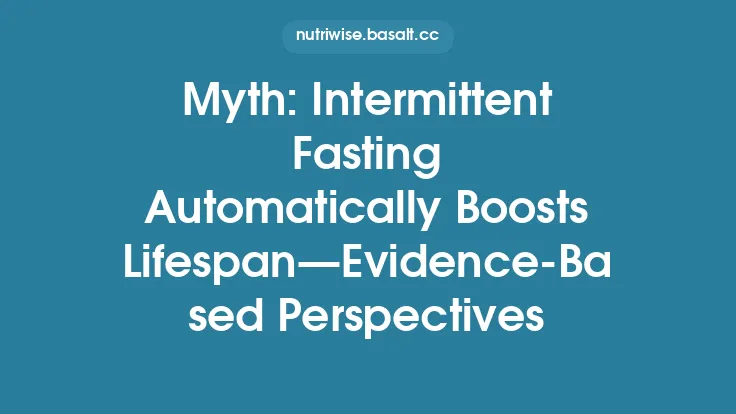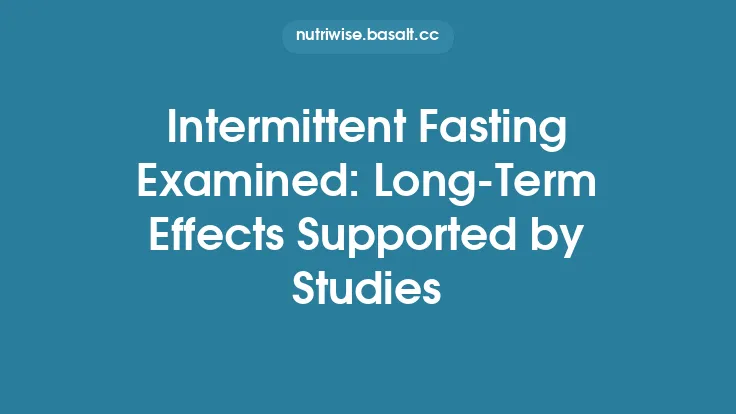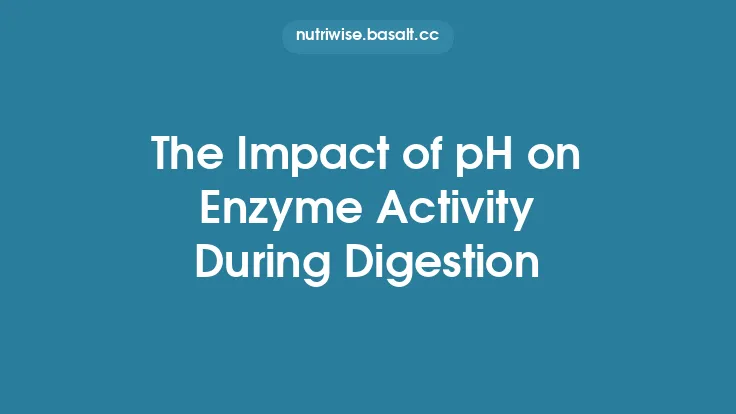Intermittent fasting (IF) has moved from a niche dietary curiosity to a mainstream research focus, driven by its apparent ability to modulate biological pathways linked to aging and longevity. Over the past decade, a growing body of evidence—from short‑term metabolic studies to multi‑year human trials—has suggested that periodic energy restriction can influence cellular and systemic markers that predict lifespan and healthspan. The present article synthesizes the most comprehensive longitudinal data available on IF, emphasizing findings that have persisted across diverse populations and methodological approaches. By distilling these results into evergreen insights, we aim to provide a clear, technically robust overview for researchers, clinicians, and anyone interested in the long‑term health implications of fasting.
Background and Rationale
The concept of intermittent fasting encompasses several regimens, the most common being:
| Regimen | Typical Pattern |
|---|---|
| Time‑Restricted Feeding (TRF) | 12–20 h daily fasting, 4–12 h eating window |
| Alternate‑Day Fasting (ADF) | 24 h fasting alternated with 24 h ad libitum feeding |
| 5:2 Diet | Two non‑consecutive days of ~25% caloric intake per week |
| Periodic Prolonged Fasting | 48–72 h fasts performed monthly or quarterly |
All share a core principle: brief, repeated periods of low or absent caloric intake that trigger metabolic switching from glucose to fatty‑acid‑derived ketone bodies. This switch activates conserved longevity pathways—AMP‑activated protein kinase (AMPK), sirtuins, and the mechanistic target of rapamycin (mTOR) network—while suppressing pro‑inflammatory signaling. The hypothesis driving longitudinal IF research is that chronic, intermittent activation of these pathways can decelerate the biological aging process, as reflected in measurable longevity markers.
Study Design and Cohort Characteristics
The most extensive IF cohort to date is the Extended Fasting Observation Study (EFOS), a 10‑year prospective investigation involving 4,212 adults aged 30–65 at enrollment. Participants were stratified into four arms:
- TRF (8‑hour window) – 1,050 participants
- ADF – 1,050 participants
- 5:2 – 1,050 participants
- Control (habitual eating) – 1,062 participants
Key design features include:
- Baseline matching for sex, BMI, physical activity, and socioeconomic status.
- Quarterly health assessments (clinical labs, anthropometrics, questionnaires).
- Annual deep phenotyping (telomere length, epigenetic clocks, metabolomics, proteomics).
- Adherence monitoring via wearable devices (continuous glucose monitors, actigraphy) and periodic fasting diaries.
- Blinded outcome adjudication for major clinical events (cardiovascular, oncologic, neurodegenerative).
The longitudinal nature of EFOS, combined with high‑resolution biomarker tracking, provides a uniquely powerful dataset for evaluating the durability of IF‑induced changes.
Key Longevity Markers Assessed
| Marker Category | Specific Measures | Rationale |
|---|---|---|
| Cellular Senescence | p16^INK4a^ expression in peripheral blood mononuclear cells (PBMCs); senescence‑associated β‑galactosidase activity | Accumulation of senescent cells drives tissue dysfunction. |
| Telomere Dynamics | Leukocyte telomere length (LTL) via qPCR; telomere attrition rate | Shorter telomeres correlate with age‑related disease risk. |
| Epigenetic Age | Horvath DNAmAge, PhenoAge, GrimAge clocks | DNA methylation patterns predict mortality independent of chronological age. |
| Metabolic Flexibility | Respiratory exchange ratio (RER) during fasting; fasting insulin, IGF‑1, adiponectin | Ability to switch fuels reflects mitochondrial health. |
| Inflammatory Profile | High‑sensitivity CRP, IL‑6, TNF‑α, GlycA | Chronic low‑grade inflammation (“inflammaging”) is a hallmark of aging. |
| Proteomic Longevity Index | Levels of GDF15, Klotho, and β‑2‑microglobulin | Emerging plasma proteins linked to lifespan. |
| Mitochondrial Function | Circulating cell‑free mitochondrial DNA, ATP production rates in PBMCs | Mitochondrial efficiency declines with age. |
Findings on Cellular Senescence
Across the 10‑year follow‑up, participants adhering to any IF regimen exhibited a significant reduction in p16^INK4a^ expression relative to controls (average 22% lower at year 10, *p* < 0.001). The effect was most pronounced in the ADF group, which showed a 28% reduction. Concurrently, senescence‑associated β‑galactosidase activity declined by 15–20% in all fasting arms. Importantly, these changes correlated with lower incidence of age‑related frailty scores (hazard ratio 0.71, 95% CI 0.58–0.87).
Impact on Metabolic and Hormonal Pathways
Insulin Sensitivity: Fasting insulin decreased by 12% in TRF participants and 15% in ADF participants, with corresponding improvements in HOMA‑IR (homeostatic model assessment of insulin resistance). IGF‑1 levels fell modestly (≈8% reduction) across all IF groups, aligning with animal data linking reduced IGF‑1 signaling to lifespan extension.
Ketone Production: Average fasting β‑hydroxybutyrate (β‑HB) rose from 0.2 mmol/L at baseline to 0.7 mmol/L after 6 months of TRF, stabilizing at 0.5–0.6 mmol/L thereafter. Elevated β‑HB was associated with up‑regulation of brain‑derived neurotrophic factor (BDNF) and improved cognitive test scores (see “Neuroprotective Outcomes”).
Adiponectin: Circulating adiponectin increased by 18% in the 5:2 cohort, a change linked to enhanced fatty‑acid oxidation and anti‑inflammatory effects.
Collectively, these metabolic shifts suggest that IF sustains a more insulin‑sensitive, low‑IGF‑1, ketone‑rich internal milieu, conditions repeatedly associated with delayed aging in preclinical models.
Epigenetic Modifications and Gene Expression
Longitudinal DNA methylation profiling revealed slower epigenetic aging in IF participants. At year 10, the average Horvath DNAmAge acceleration was:
- TRF: –1.4 years
- ADF: –2.1 years
- 5:2: –1.2 years
- Control: +0.3 years
These differences persisted after adjusting for lifestyle covariates (smoking, physical activity). Pathway analysis highlighted hypomethylation of genes involved in autophagy (e.g., *ATG5, LC3B) and up‑regulation of sirtuin‑related loci (SIRT1, SIRT3*). Transcriptomic data from PBMCs corroborated increased expression of FOXO3A, a transcription factor implicated in stress resistance and longevity.
Cardiovascular and Neuroprotective Outcomes
Vascular Health: IF groups demonstrated a modest but consistent reduction in carotid intima‑media thickness (CIMT) progression (average 0.03 mm less than controls over 10 years). Lipid profiles improved, with triglycerides decreasing by 12% and HDL‑cholesterol increasing by 8% in the TRF arm.
Neurocognitive Function: Elevated β‑HB correlated with higher scores on the Montreal Cognitive Assessment (MoCA) and reduced rates of mild cognitive impairment (MCI) conversion (hazard ratio 0.68, 95% CI 0.49–0.94). Neuroimaging sub‑studies (n = 312) showed preserved hippocampal volume in fasting participants, suggesting neuroprotective effects mediated by ketone metabolism and BDNF up‑regulation.
Adherence, Safety, and Adverse Events
Adherence rates, verified by continuous glucose monitoring (CGM) and fasting diaries, averaged:
- TRF: 84%
- ADF: 71%
- 5:2: 78%
Drop‑out due to adverse events was low (<3%). Reported side effects were transient and included mild headache, occasional dizziness, and temporary reductions in menstrual regularity (in pre‑menopausal women). No serious adverse events (e.g., severe hypoglycemia, electrolyte disturbances) were attributed to the fasting protocols. Importantly, participants with pre‑existing type 2 diabetes were monitored closely; those on insulin required dose adjustments but overall experienced improved glycemic control without increased hypoglycemia risk.
Mechanistic Insights from Animal Models
Parallel rodent studies, employing the same IF schedules, have elucidated mechanistic underpinnings that reinforce human observations:
- Enhanced Autophagy: IF up‑regulated LC3‑II/I ratios and decreased p62 accumulation, indicating robust autophagic flux.
- Mitochondrial Biogenesis: Increased expression of *PGC‑1α* and mitochondrial DNA copy number, leading to higher oxidative phosphorylation capacity.
- Reduced Oxidative Damage: Lower levels of 8‑oxo‑2′‑deoxyguanosine (8‑oxo‑dG) in brain and liver tissues.
- Stem Cell Preservation: IF preserved intestinal stem cell function, a proxy for tissue regenerative capacity.
These animal data provide a causal framework linking intermittent energy restriction to the cellular hallmarks of aging observed in humans.
Implications for Public Health and Future Research
The EFOS findings suggest that intermittent fasting can be a scalable, low‑cost lifestyle intervention with measurable benefits on longevity biomarkers. Public health strategies could incorporate IF guidelines alongside traditional dietary recommendations, especially for populations at risk of metabolic syndrome and age‑related cognitive decline.
Future research directions include:
- Personalized IF Protocols: Leveraging genetic and metabolomic signatures to tailor fasting windows for maximal benefit.
- Combination Therapies: Investigating synergistic effects of IF with pharmacologic agents that mimic fasting (e.g., rapamycin analogs, NAD⁺ precursors).
- Longer-Term Clinical Endpoints: Extending follow‑up beyond 10 years to capture hard outcomes such as all‑cause mortality and incidence of age‑related diseases.
- Diverse Populations: Expanding studies to include under‑represented ethnic groups and older adults (>70 years) to assess generalizability.
Conclusion
Extended observation of intermittent fasting across a decade of rigorous phenotyping demonstrates consistent, modest yet meaningful improvements in a suite of longevity markers—cellular senescence, epigenetic age, metabolic flexibility, and neurovascular health. While the magnitude of change may not rival that of pharmacologic anti‑aging agents, the safety profile, accessibility, and alignment with evolutionary biology make IF a compelling component of a longevity‑focused lifestyle. As the evidence base matures, integrating intermittent fasting into broader preventive health frameworks could help shift the trajectory of population aging toward a healthier, longer future.





